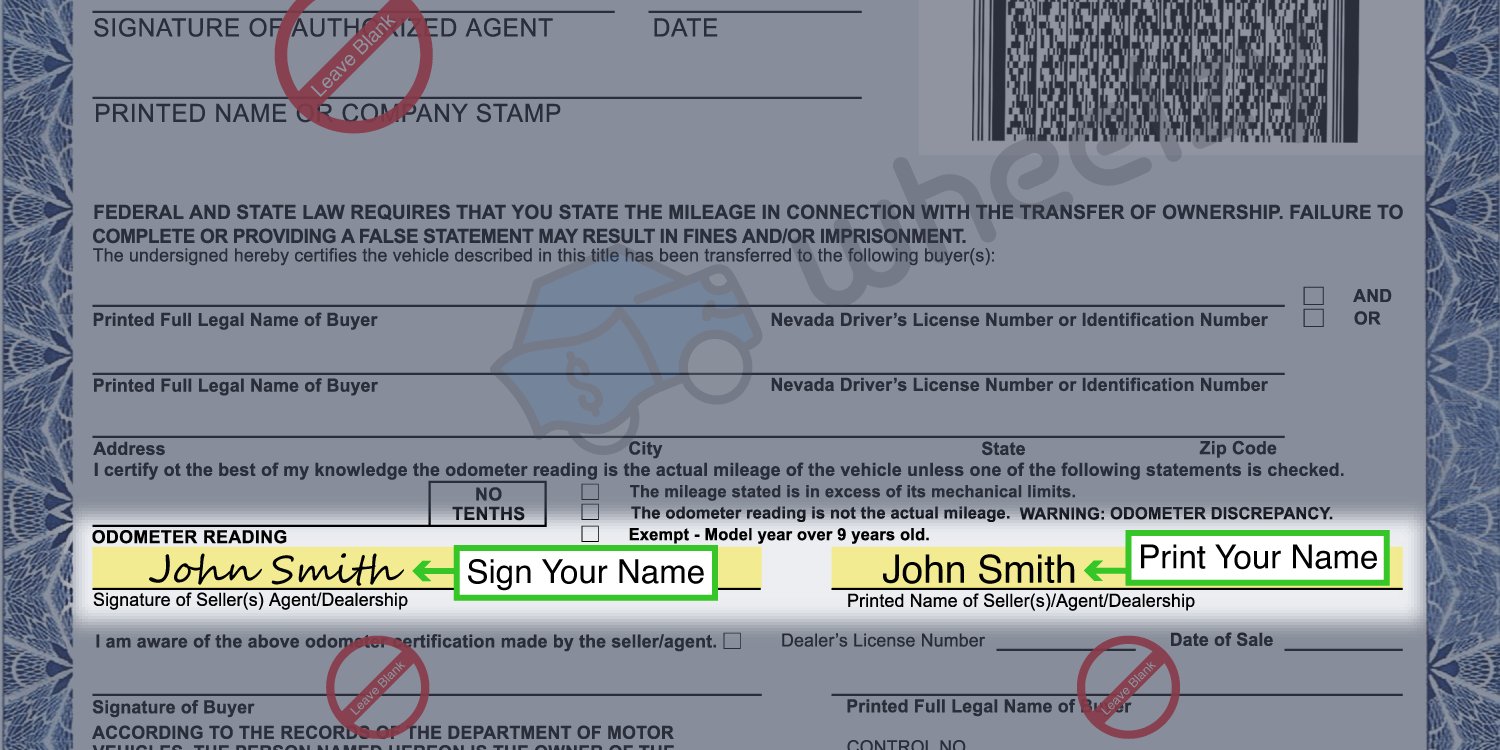
A Comprehensive Guide On How To Transfer Car Title In Nevada
Transferring a car title in Nevada is a straightforward process, but it’s essential to follow the correct steps to ensure a smooth transition of ownership. First, ensure all necessary paperwork, including the title certificate, bill of sale, and odometer reading, is ready. Next, visit the Nevada Department of Motor Vehicles office to submit the required documents and pay the transfer fee. Following these simple steps will help you navigate the process of how to transfer car title in Nevada efficiently and without any hitches.
How to Transfer Car Title in Nevada
Welcome to our comprehensive guide on transferring a car title in the state of Nevada! Whether you are buying, selling, inheriting, or gifting a vehicle, understanding the title transfer process is crucial. In this article, we will walk you through the steps involved in transferring a car title in Nevada, including the necessary documents, fees, and important considerations. Let’s dive in!
Why is Title Transfer Important?
Before we get into the nitty-gritty details of how to transfer a car title in Nevada, let’s first understand why this process is essential. A car title is a legal document that establishes ownership of a vehicle. When you transfer a car title, you are essentially transferring ownership from one party to another. This is important for both the buyer and the seller to ensure a smooth transaction and avoid any legal issues down the road.
Documents Required for Title Transfer
When transferring a car title in Nevada, there are several documents that you will need to gather to complete the process successfully. These documents include:
1. Certificate of Title
The most critical document for transferring a car title is the Certificate of Title. This document shows the current owner of the vehicle and must be signed by both the buyer and the seller to transfer ownership. If the vehicle is financed, the title will be held by the lienholder until the loan is paid off.
2. Bill of Sale
A Bill of Sale is a legal document that records the sale of the vehicle between the buyer and the seller. It includes important information such as the purchase price, vehicle identification number (VIN), and the date of sale. Both parties must sign the Bill of Sale for the transfer to be valid.
3. Odometer Disclosure Statement
In Nevada, you are required to provide an Odometer Disclosure Statement when transferring a car title. This statement confirms the accuracy of the vehicle’s mileage at the time of sale and is necessary to prevent odometer fraud.
4. smog check
Depending on the age of the vehicle and the county in which the transfer takes place, a smog check may be required. Make sure to check the specific requirements in your area to ensure compliance with emissions regulations.
Steps to Transfer Car Title in Nevada
Now that you have gathered all the necessary documents, let’s walk through the steps involved in transferring a car title in Nevada:
Step 1: Complete the Certificate of Title
Both the buyer and the seller must fill out and sign the Certificate of Title. Make sure to provide accurate information to avoid any delays in the transfer process.
Step 2: Fill Out the Bill of Sale
Complete the Bill of Sale with the relevant details of the sale, including the purchase price, VIN, and date of sale. Both parties should sign the document to make it legally binding.
Step 3: Provide the Odometer Disclosure Statement
Fill out the Odometer Disclosure Statement accurately, confirming the mileage of the vehicle at the time of sale. This statement helps prevent odometer fraud and is a mandatory requirement in Nevada.
Step 4: Obtain a smog check, if required
If your vehicle is subject to emissions testing, make sure to get a smog check and provide the necessary documentation to complete the transfer process.
Step 5: Visit the Nevada Department of Motor Vehicles (DMV)
Once you have all the documents ready, visit your local Nevada DMV office to complete the title transfer process. Submit the required documents and pay the applicable fees to finalize the transfer.
Important Considerations
Transferring a car title in Nevada is a relatively straightforward process, but there are some essential considerations to keep in mind:
1. Timing
Make sure to complete the title transfer promptly after the sale to avoid any potential issues. In Nevada, you are required to transfer the title within 30 days of the sale to avoid penalties.
2. Fees
Be prepared to pay the necessary fees for transferring the title, which may vary depending on the county and the type of transaction. Check the current fee schedule to ensure you have the correct amount.
3. Lien Release
If the vehicle is financed, you will need to obtain a lien release from the lender before transferring the title. This document confirms that the loan has been paid off, and the lender no longer has a legal claim on the vehicle.
Transferring a car title in Nevada is a crucial step in the vehicle ownership process. By following the steps outlined in this guide and ensuring you have all the necessary documents, you can complete the title transfer smoothly and legally. Remember to stay organized, communicate clearly with the buyer or seller, and comply with all state regulations to avoid any complications. If you have any questions or need assistance with the title transfer process, don’t hesitate to reach out to the Nevada DMV for guidance. Happy transferring!
How to complete a Nevada title – private party sales
Frequently Asked Questions
What documents are required to transfer a car title in Nevada?
When transferring a car title in Nevada, you will need the current title signed by the seller, the Application for Vehicle Registration, and a Bill of Sale. Additionally, you may need a VIN inspection, emissions inspection certificate, and proof of insurance.
Where can I transfer a car title in Nevada?
You can transfer a car title in Nevada either online, by mail, or in person at a Nevada Department of Motor Vehicles (DMV) office. Make sure to choose the method that best suits your needs and follow the specific instructions provided by the DMV.
What is the process for transferring a car title in Nevada?
The process for transferring a car title in Nevada involves completing the title transfer form, submitting the required documents, paying the transfer fee, and obtaining a new title with your name on it. You may also need to visit the DMV for a VIN inspection if required.
Final Thoughts
In conclusion, transferring a car title in Nevada involves completing the necessary forms, paying the required fees, and submitting the paperwork to the DMV. Make sure to obtain a bill of sale and provide a lien release if applicable. Remember to have the buyer and seller sign the necessary sections on the title for a smooth transfer process. Following these steps on how to transfer car title in Nevada ensures a hassle-free transaction.


